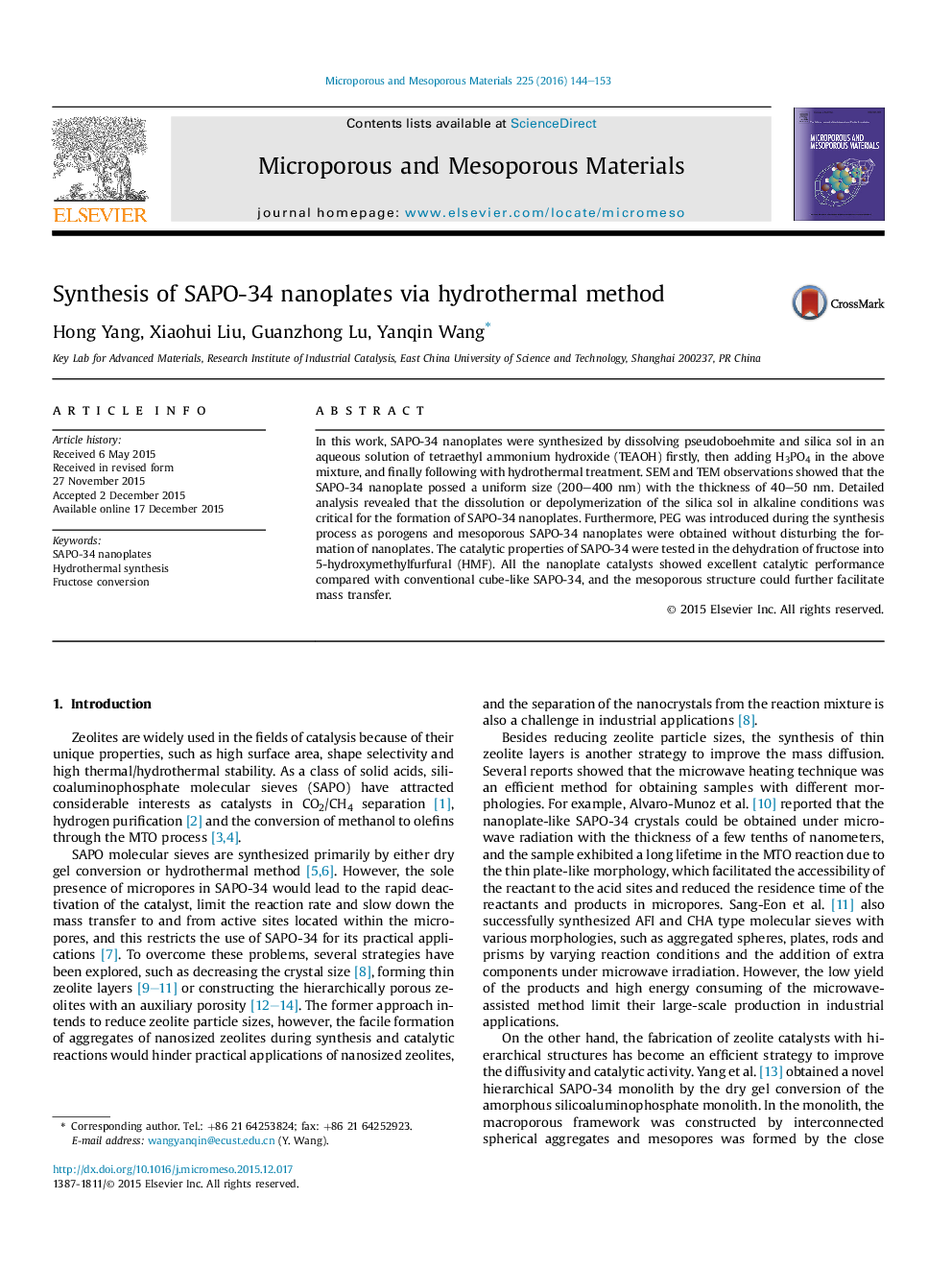| Article ID | Journal | Published Year | Pages | File Type |
|---|---|---|---|---|
| 72075 | Microporous and Mesoporous Materials | 2016 | 10 Pages |
•SAPO-34 nanoplates are synthesized via hydrothermal treatments.•The obtained SAPO-34 nanoplates poss a uniform size with the thickness of 40–50 nm.•PEG, as intra-crystalline mesoporous porogens, has little impact on the morphology of SAPO-34.•Nanoplate-like SAPO-34 shows higher catalytic activity than cube-like SAPO-34.
In this work, SAPO-34 nanoplates were synthesized by dissolving pseudoboehmite and silica sol in an aqueous solution of tetraethyl ammonium hydroxide (TEAOH) firstly, then adding H3PO4 in the above mixture, and finally following with hydrothermal treatment. SEM and TEM observations showed that the SAPO-34 nanoplate possed a uniform size (200–400 nm) with the thickness of 40–50 nm. Detailed analysis revealed that the dissolution or depolymerization of the silica sol in alkaline conditions was critical for the formation of SAPO-34 nanoplates. Furthermore, PEG was introduced during the synthesis process as porogens and mesoporous SAPO-34 nanoplates were obtained without disturbing the formation of nanoplates. The catalytic properties of SAPO-34 were tested in the dehydration of fructose into 5-hydroxymethylfurfural (HMF). All the nanoplate catalysts showed excellent catalytic performance compared with conventional cube-like SAPO-34, and the mesoporous structure could further facilitate mass transfer.
Graphical abstractSAPO-34 nanoplates with the thickness of 40–50 nm were successfully synthesized by mixing precursors in different sequence and then hydrothermally treated for crystallization.Figure optionsDownload full-size imageDownload as PowerPoint slide
